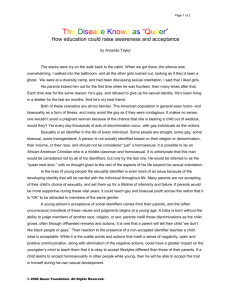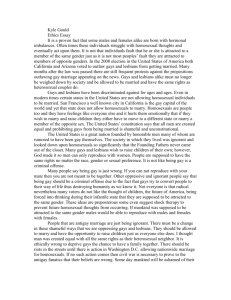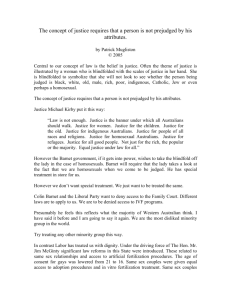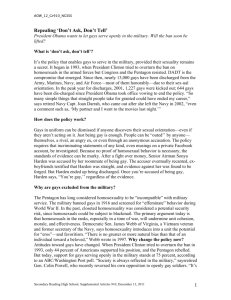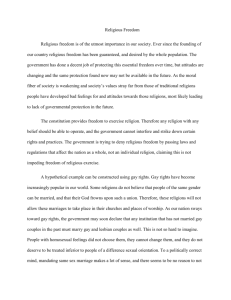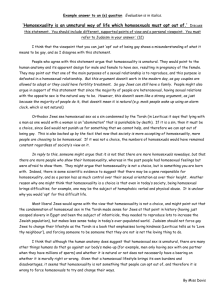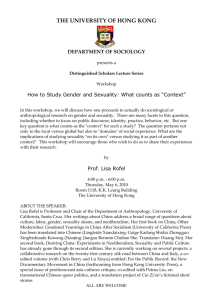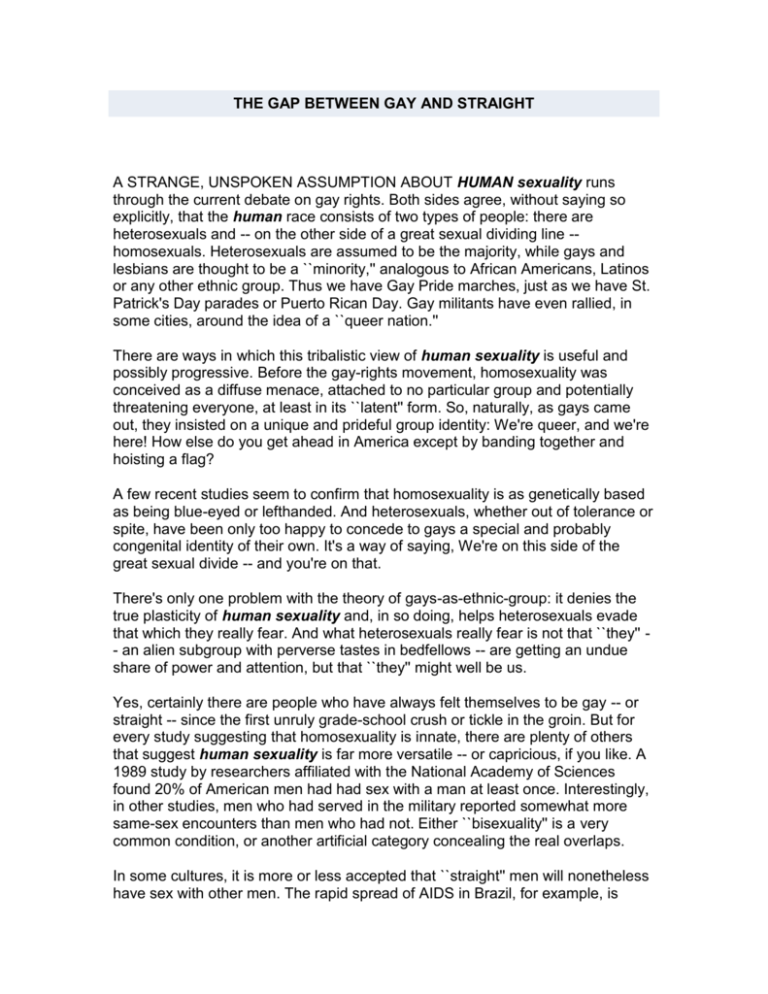
THE GAP BETWEEN GAY AND STRAIGHT
A STRANGE, UNSPOKEN ASSUMPTION ABOUT HUMAN sexuality runs
through the current debate on gay rights. Both sides agree, without saying so
explicitly, that the human race consists of two types of people: there are
heterosexuals and -- on the other side of a great sexual dividing line -homosexuals. Heterosexuals are assumed to be the majority, while gays and
lesbians are thought to be a ``minority,'' analogous to African Americans, Latinos
or any other ethnic group. Thus we have Gay Pride marches, just as we have St.
Patrick's Day parades or Puerto Rican Day. Gay militants have even rallied, in
some cities, around the idea of a ``queer nation.''
There are ways in which this tribalistic view of human sexuality is useful and
possibly progressive. Before the gay-rights movement, homosexuality was
conceived as a diffuse menace, attached to no particular group and potentially
threatening everyone, at least in its ``latent'' form. So, naturally, as gays came
out, they insisted on a unique and prideful group identity: We're queer, and we're
here! How else do you get ahead in America except by banding together and
hoisting a flag?
A few recent studies seem to confirm that homosexuality is as genetically based
as being blue-eyed or lefthanded. And heterosexuals, whether out of tolerance or
spite, have been only too happy to concede to gays a special and probably
congenital identity of their own. It's a way of saying, We're on this side of the
great sexual divide -- and you're on that.
There's only one problem with the theory of gays-as-ethnic-group: it denies the
true plasticity of human sexuality and, in so doing, helps heterosexuals evade
that which they really fear. And what heterosexuals really fear is not that ``they'' - an alien subgroup with perverse tastes in bedfellows -- are getting an undue
share of power and attention, but that ``they'' might well be us.
Yes, certainly there are people who have always felt themselves to be gay -- or
straight -- since the first unruly grade-school crush or tickle in the groin. But for
every study suggesting that homosexuality is innate, there are plenty of others
that suggest human sexuality is far more versatile -- or capricious, if you like. A
1989 study by researchers affiliated with the National Academy of Sciences
found 20% of American men had had sex with a man at least once. Interestingly,
in other studies, men who had served in the military reported somewhat more
same-sex encounters than men who had not. Either ``bisexuality'' is a very
common condition, or another artificial category concealing the real overlaps.
In some cultures, it is more or less accepted that ``straight'' men will nonetheless
have sex with other men. The rapid spread of AIDS in Brazil, for example, is
attributed to homosexual behavior on the part of ostensibly heterosexual males.
In the British upper class, homosexual experience used to be a not uncommon
feature of male adolescence. Young Robert Graves went off to World War I
pining desperately for his schoolboy lover, but returned and eventually married.
And, no, he did not spend his time in the trenches buggering his comrades-inarms.
So being gay is not quite the same as being Irish. There are shadings; there are
changes in the course of a lifetime. I know people who were once brazenly out
and are now happily, heterosexually married -- as well as people who have gone
in the opposite direction. Or, to generalize beyond genital sexuality to the realm
of affection and loyalty: we all know men who are militantly straight yet reserve
their deepest feelings for the male-bonded group -- the team, the volunteer fire
department, the men they went to war with.
The problem for the military is not that discipline will be undermined by a sudden
influx of stereotypically swishy gays. The problem is that the military is still a
largely unisexual institution, with all that that implies about the possibility of
homosexual encounters even among otherwise straight men. The traditionalists
keep bringing up the ``crowded showers,'' much like the dreaded unisex toilets of
the ERA debate. But, somewhere deep in the sexual imagination, one has to
wonder: Why do they have to have such crowded showers anyway?
By saying that gays are a definite, distinguishable minority that can easily be
excluded, the military may feel better about its own presumptive heterosexuality.
But can ``gays'' really be excluded? Do 18-year-old recruits really have a firm
idea what their sexuality is? The military could deal with its sex crisis much more
simply, and justly, by ceasing to be such a unisexual institution and letting
women serve on an equal basis.
Perhaps we have all, ``gays'' and ``straights,'' got as far as we can with the
metaphor of gays as a quasi-ethnic group entitled to its own ``rights.'' Perhaps it
is time to acknowledge that the potential to fall in love with, or just be attracted to,
a person of the same sex is widespread among otherwise perfectly conventional
people.
There would still be enormous struggle over what is ``right'' and ``wrong,''
``normal'' and ``abnormal.'' But at least this would be a struggle that everyone -gay or straight -- would have a stake in: those who think of themselves as gay
because of who they are; those who think of themselves as straight because of
who they might yet become. Quite apart from sex, all men would surely be better
off in a world where simple acts of affection between men occasioned no great
commentary or suspicion, where a hug would be a hug and not a ``statement.''
~~~~~~~~
By Barbara Ehrenreich
Copyright © Time Inc., 1993

